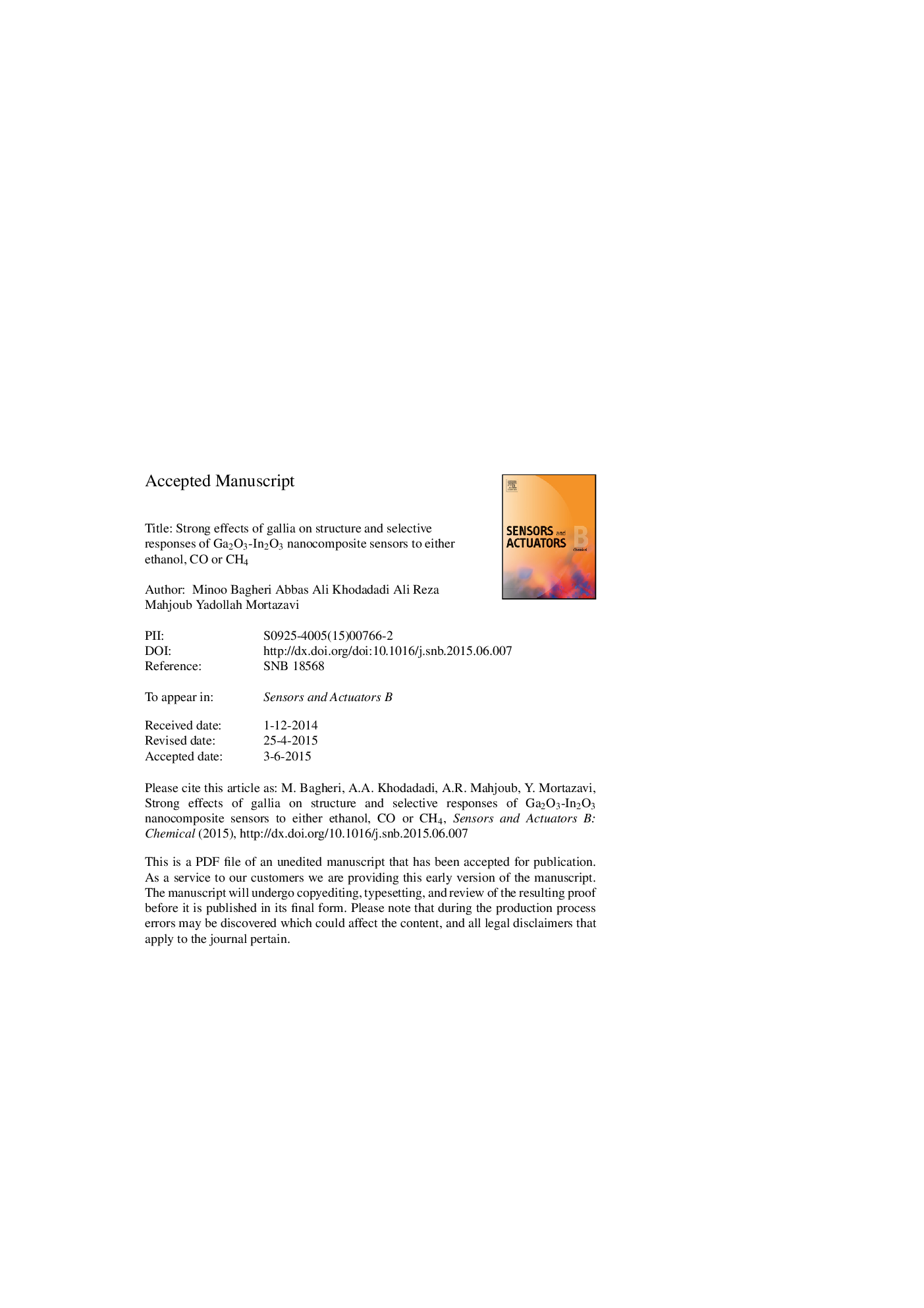| Article ID | Journal | Published Year | Pages | File Type |
|---|---|---|---|---|
| 7145742 | Sensors and Actuators B: Chemical | 2015 | 36 Pages |
Abstract
Gallia-In2O3 nanocomposite sensors containing 0-75 wt% gallia calcined at 500-850 °C are fabricated via co-precipitation method and their response to ethanol, CO, methane and volatile organic compounds is investigated at different operating temperatures. The samples were characterized by X-ray diffraction, energy-dispersive X-ray spectroscopy, high-resolution transmission electron microscopy and BET surface area measurement techniques. Depending on gallia content and calcination temperature, different phases of α- and β-Ga2O3 and c- and rh-In2O3 are formed. The sensors' responses and selectivities strongly depend on their gallia content and operating and calcination temperatures. At 300 °C, 10 wt% Ga2O3-In2O3 and 25 wt% Ga2O3-In2O3 sensors calcined at 500 °C show maximum response to ethanol and CO, respectively, while the maximum response to methane is observed at 400 °C by the sensor containing 65 wt% Ga2O3. 25 wt% Ga2O3-In2O3 calcined at 850 °C is selective to methane at 400 °C, however, 75 wt% Ga2O3-In2O3 calcined at 650 °C shows no response to methane. Also, this sensor calcined at 850 °C is selective to either CO or methane at 350 and 650 °C, respectively, in presence of ethanol and other volatile organic compounds. The sensor containing 65 wt% gallia calcined at 500 °C is selective to CO in presence of ethanol and methane at 250 °C. In addition, the sensor containing 25 wt% gallia is selective to VOCs in presence of CO and methane, at the low temperature of 200 °C.
Related Topics
Physical Sciences and Engineering
Chemistry
Analytical Chemistry
Authors
Minoo Bagheri, Abbas Ali Khodadadi, Ali Reza Mahjoub, Yadollah Mortazavi,
